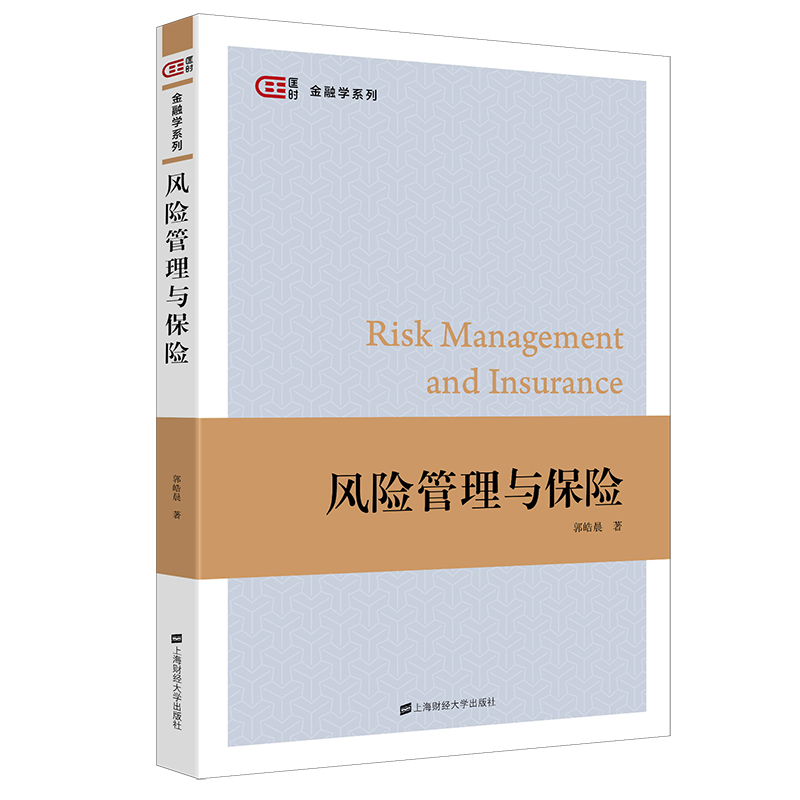会计英语(第2版) / 高等院校十二五规划教材专业基础课系列
定价:¥39.00
作者: 刘智英,李杨等
出版时间:2019-08
出版社:清华大学出版社
- 清华大学出版社
- 9787302520276
- 2-1
- 264818
- 42212290-3
- 平装
- 16开
- 2019-08
- F23
- 财务会计
内容简介
《会计英语(第2版)》共分为四个部分、16个单元,*部分是会计学的入门课程,介绍了会计的簿记循环,包括会计元素、会计等式、复式记账法、试算平衡表以及如何编制财务报表,帮助初学者了解和掌握西方簿记的有关知识;第二部分到第四部分分别介绍了资产、负债、所有者权益的相关知识和业务处理。全球化、知识化、人本化和信息化是21世纪的时代特征,为适应时代的要求和充分考虑21世纪财经类人才的基本知识素养,《会计英语(第2版)》的每一章节都配有相应的金融管理类知识的拓展,并且有相应的习题训练,便于学生进行自测和提升。 《会计英语(第2版)》可作为高等学校会计类专业的教科书,也可供金融学、管理学和其他各专业学习会计英语选用,同时可作为从事会计实务读者的参考资料。
目录
目 录Part One Bookkeeping CycleChapter 1 Introduction to Accounting 31.1 Concepts of Accounting 31.2 Financial Accounting and Managerial Accounting 31.2.1 Financial Accounting 31.2.2 Managerial Accounting 41.3 Types of Business Entity and Accounting Profession 41.3.1 Types of Business Entity 41.3.2 Procedure of Business Transaction 51.3.3 Accounting Profession 51.4 Accounting Principles 61.4.1 Accounting Entity Principle 61.4.2 Going-Concern Principle 61.4.3 Accounting Period Principle 61.4.4 Monetary Unit Principle 71.4.5 Historical Cost Principle 71.4.6 The Consistent Principle 71.4.7 The Conservatism Principle 71.4.8 The Objectivity Principle 8Key Words and Phrases 8Exercises 9Reading Materials 11Chapter 2 Accounting Elements and Accounting Equation 132.1 The Accounting Bases 132.1.1 Cash Basis 132.1.2 Accrual Basis 142.2 Accounting Elements 142.3 The Calculation Method for Accounting 172.4 Accounting Equation 182.4.1 The Content of Accounting Equation 182.4.2 The Effects of Economic Transactions on the Accounting Equation 19Key Words and Phrases 21Exercises 22Reading Materials 23Chapter 3 Double-Entry Bookkeeping 253.1 Accounts 253.1.1 Account Titles 263.1.2 Types of Commonly Used Accounts 263.2 Debit and Credit Principle 273.3 Double-Entry Bookkeeping 283.3.1 The Nature and Function of Double-Entry Bookkeeping 283.3.2 Basic Rules for Double-Entry Bookkeeping 283.4 The Bookkeeping for Assets, Liabilities and Capital 293.5 The Bookkeeping for Expenses and Revenues 31Key Words and Phrases 32Exercises 33Reading Materials 35Quiz 1 35Chapter 4 Journalizing and Posting Transaction 424.1 Journals 424.1.1 General Journal 424.1.2 Special Journal 444.2 Posting Transaction 45Key Words and Phrases 48Exercises 49Reading Materials 50Quiz 2 51Chapter 5 Trial Balance and Adjustment 545.1 Introduction to Trial Balance 545.1.1 The Content of the Trial Balance 545.1.2 The Classification of the Trial Balance 555.1.3 The Balance of the Account 555.1.4 The Functions of a Trial Balance 555.1.5 Procedures for Preparing a Trial Balance 555.2 Identification of Errors 565.2.1 The Classifications of Errors 565.2.2 Other Errors 565.3 The Treatment of Errors 565.3.1 Errors in the Account Balances or Preparing the Trial Balance 565.3.2 Errors Recognized by the Trial Balance 575.3.3 Errors Unidentified by the Trial Balance 575.4 Suspense Accounts 575.5 Adjustments for Transactions 585.5.1 Principle for Adjustments 585.5.2 The Procedure 585.5.3 Preparation of the Income Statement and Balance Sheet 595.5.4 Analyzing the Characteristic of the Extra Event 635.5.5 Showing Them in the Working Paper as Changes 64Key Words and Phrases 66Exercises 66Reading Materials 68Quiz 3 69Chapter 6 Financial Statement 716.1 Balance Sheet 716.2 Income Statement 736.2.1 Single-Step Form 736.2.2 Multiple-Step Income Statement 736.3 Cash Flow Statement 746.3.1 Structure of the Cash Flow Statement 756.3.2 Preparing a Complete Statement of Cash Flows 77Key Words and Phrases 78Exercises 78Reading Materials 80Part Two Special Topics of AssetsChapter 7 Cash and Its Control 857.1 Cash 857.2 The Transactions about Cash Receipts and Cash Payments 867.2.1 Cash Receipts 867.2.2 Cash Payments 877.3 Internal Control over Cash 887.3.1 The Characteristics of an Effective System of Internal Control 887.4 Petty Cash Fund 897.4.1 The Purpose of Petty Cash 907.4.2 Documentation and Authorization 907.4.3 Accounting System Relative to Cash Book 917.5 Bank Reconciliations 927.5.1 General Bank Service and Operation of Bank Clearing System 927.5.2 Reconciling the Bank Balance 937.5.3 Steps in Reconciling the Bank Balance 94Key Words and Phrases 95Exercises 96Reading Materials 97Quiz 4 98Chapter 8 Inventories 1028.1 Inventory 1028.2 Periodic and Perpetual Inventory System 1028.2.1 Periodic Inventory System 1038.2.2 Perpetual Inventory System 1038.2.3 Differences between Perpetual and Periodic System 1038.3 Inventory Costing Methods 1058.3.1 Specific Identification 1058.3.2 First-in, First-out (FIFO) 1058.3.3 Last-in, First-out (LIFO) 1068.3.4 The Weighted-average Method 1078.4 Comparing FIFO, LIFO and Average Cost 107Key Words and Phrases 108Exercises 108Reading Materials 111Chapter 9 Receivables 1139.1 Notes Receivable 1139.1.1 Determining Maturity Date and Computing Maturity Value 1149.1.2 Accounting for Notes Receivable 1159.1.3 Discounting Notes Receivable 1159.2 Accounts Receivable 1169.3 Estimating the Amount of Bad Debt Expense 1189.3.1 Income Statement Method 1189.3.2 Balance Sheet Method 119Key Words and Phrases 120Exercises 120Reading Materials 121Quiz 5 123Chapter 10 Fixed Assets and Depreciation 12710.1 Overview 12710.1.1 Major Categories of Fixed Assets 12710.1.2 Long-term Assets 12810.1.3 Capital Expenditures and Revenue Expenditures 12810.1.4 The Difference between Capital Expenditure and Revenue Expenditure 12810.1.5 The Nature of the Expenditure 12910.2 Depreciation for the Fixed Assets 12910.3 Accounting Entries for the Fixed Assets 12910.4 Factors Affecting Depreciation 13010.5 Calculating Depreciation 13010.5.1 Straight-line Method 13010.5.2 The Reducing-Balance Method 13110.6 Controlling Tangible Non-Current Assets 13310.7 Accounting for Intangibles 134Key Words and Phrases 135Exercises 136Reading Materials 137Part Three Special Topics of LiabilityChapter 11 Payroll 14111.1 Payroll Register 14111.2 Individual Pay Slip 14311.2.1 Differences between Wages and Salaries 14411.2.2 Gross Pay, Deductions and Net Pay 14411.2.3 Net Pay, Take-home Pay 14411.2.4 The Relationship between Gross Pay and Net Pay 14511.3 Procedure and Documentations 14511.3.1 Processing the Payroll 14511.3.2 Documentations 14511.4 The Calculations for Pay 14511.4.1 Basic Pay 14611.4.2 Supplementary Pay 14611.4.3 Commissions 14711.5 Authorization, Security and Control 14811.6 Accounting Treatment 14811.6.1 Posting Payroll Details to the Main Ledger 14811.6.2 Accounting Entries 149Key Words and Phrases 149Exercises 150Reading Materials 151Chapter 12 Liability 15312.1 Current Liabilities 15312.1.1 Definition and Types of Current Liabilities 15312.1.2 Notes Payable 15312.1.3 Accounts Payable 15512.2 Long-term Liabilities 15612.2.1 The Fundamental Concepts 15612.2.2 Types of Bonds 15712.2.3 Accounting for Bonds Payable 158Key Words and Phrases 160Exercises 161Reading Materials 162Part Four Special Topics of Owners’ EquityChapter 13 Owners’ Equity—Partnership Accounting 16713.1 Characteristics of Partnerships 16713.1.1 Advantages and Disadvantages of Partnerships 16813.1.2 Allocating Net Income among the Partners 16813.2 Admission of a New Partner 17013.2.1 By Purchase of an Interest 17013.2.2 By Investing in the Firm 17013.3 Liquidation of a Partnership 17113.3.1 Sale of the Business 17113.3.2 Division of the Gain or Loss from Sale of the Business 17213.3.3 Distribution of Cash 172Key Words and Phrases 173Exercises 173Reading Materials 174Chapter 14 Corporation Accounting—Capital Stock 17514.1 Characteristics of the Corporation 17514.2 Formation of a Corporation 17614.2.1 Rights of Stockholders 17614.2.2 Stockholders’ Equity 17714.3 Equity Accounting for the Corporation 17714.4 Authorization and Issuance of Capital Stock 17814.4.1 Authorization of Stock 17814.4.2 Par Value 17814.5 Classes of Shares 17914.5.1 Common Stocks 17914.5.2 Preferred Stock 17914.5.3 Classes of Preferred Stock 17914.6 Issue of Stock 18014.6.1 Stock Issuing at Par 18014.6.2 Stock Issuing at Premium 18114.7 Treasury Stock 181Key Words and Phrases 182Exercises 183Reading Materials 184Chapter 15 An Overview of Financial Management 18515.1 Career Opportunities in Finance 18515.1.1 Money and Capital Market 18515.1.2 Investments 18615.1.3 Financial Management 18615.2 The Financial Staff’s Responsibilities 18715.2.1 Forecasting and Planning 18715.2.2 Major Investment and Financing Decisions 18715.2.3 Coordination and Control 18715.2.4 Dealing with Financial Markets 18715.2.5 Risk Management 18815.3 The Goals of the Corporation 18815.3.1 Managerial Incentives to Maximize Shareholder Wealth 18815.3.2 Stock Price Maximization and Social Welfare 189Key Words and Phrases 189Exercises 190Reading Materials 190Chapter 16 Analysis of Financial Statements 19216.1 Introduction to Financial Statement Analysis 19216.2 Ratio Analysis 19316.3 Detailed Ratios 19316.3.1 Short-term Liquidity 19316.3.2 Long-term Solvency and Capital Structure 19416.3.3 Profitability 19416.3.4 Efficiency 19516.3.5 Growth 19516.4 The Limitations of Ratio Analysis 19516.4.1 Historical Cost Accounting 19516.4.2 Seasonal Fluctuations 19616.4.3 Non-standardization of Accounting Policies 196Key Words and Phrases 196Exercises 197Reading Materials 198Quiz 6 200










